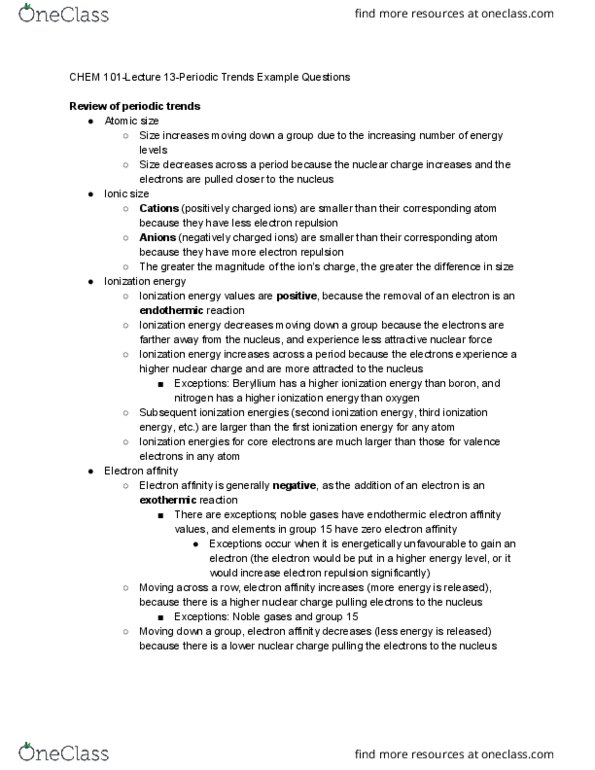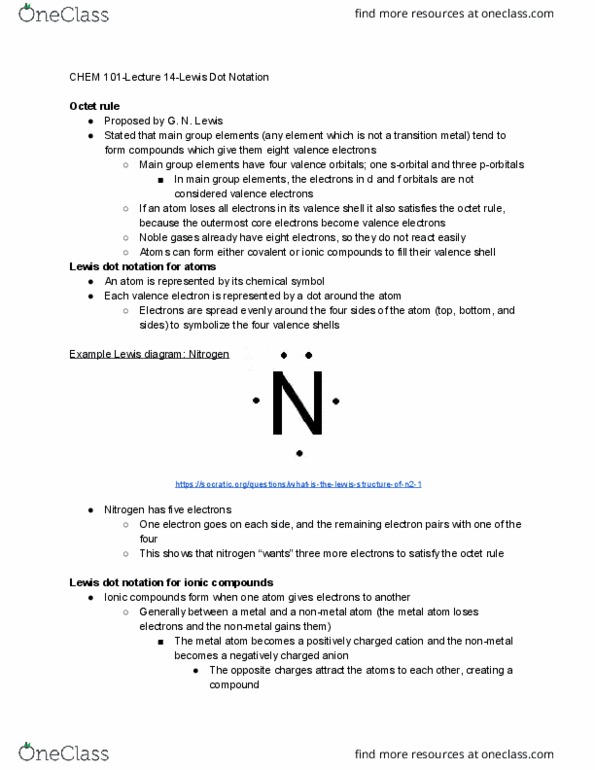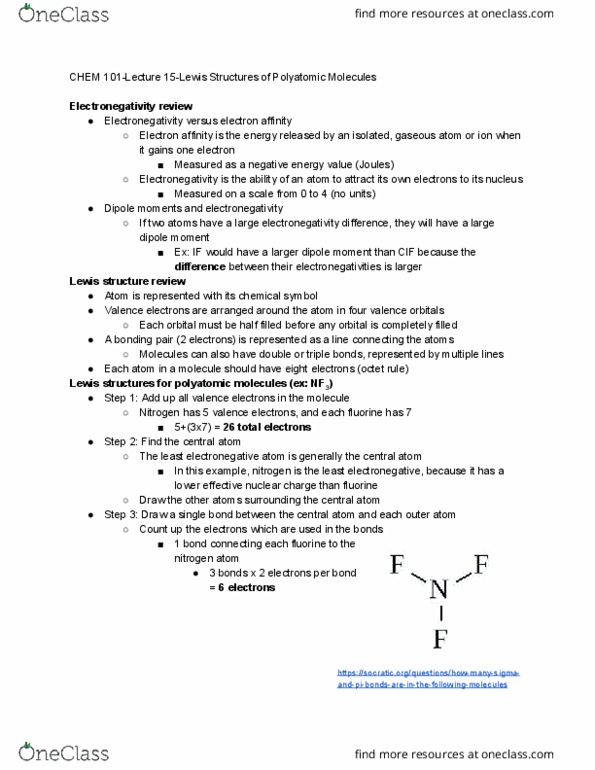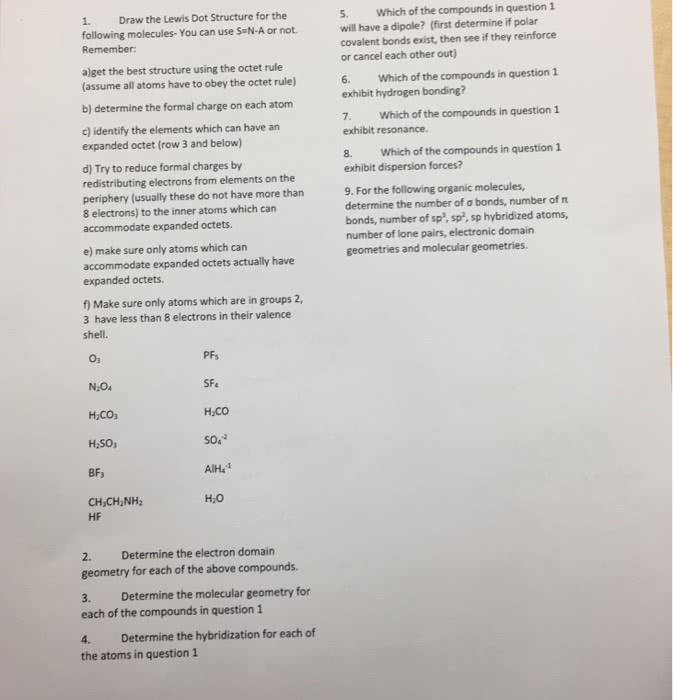CHEM 101 Lecture Notes - Lecture 14: Bond Length, Electronegativity, Chemical Polarity
CHEM 101 verified notes
14/40View all
Document Summary
Stated that main group elements (any element which is not a transition metal) tend to form compounds which give them eight valence electrons. Main group elements have four valence orbitals; one s-orbital and three p-orbitals. In main group elements, the electrons in d and f orbitals are not considered valence electrons. If an atom loses all electrons in its valence shell it also satisfies the octet rule, because the outermost core electrons become valence electrons. Noble gases already have eight electrons, so they do not react easily. Atoms can form either covalent or ionic compounds to fill their valence shell. An atom is represented by its chemical symbol. Each valence electron is represented by a dot around the atom. Electrons are spread evenly around the four sides of the atom (top, bottom, and sides) to symbolize the four valence shells. One electron goes on each side, and the remaining electron pairs with one of the four.





